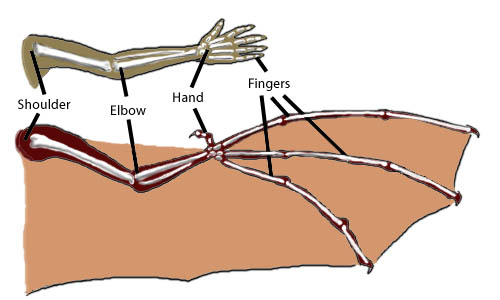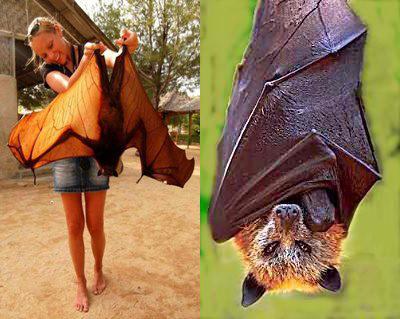Bats come in all shapes and sizes
Bats are mammals belonging to the order Chiroptera, a name of Greek origin meaning "hand-wing," which accurately describes the animal's most unusual anatomical feature. Their forelimbs form webbed wings, making them the only mammals naturally capable of true and sustained flight. By contrast, other mammals said to fly, such as flying squirrels and gliding possums, can only glide for short distances. Unlike birds, bats do not flap their entire forelimbs, but instead flap their spread-out digits, which are very long and covered with a thin membrane.

Within Chiroptera two distinct groups or sub-orders are found. The first are the small, insect eating bats called Microchiroptera (micro-bats). Bats within this group include those that roost in caves or in tree cavities and are found worldwide. The second is Megachiroptera (mega-bats), a group that includes all the large bats, including flying-foxes, which predominately eat fruit and nectar. This group is mainly confined to south-east Asia and the Pacific, including India and Australia. One of the largest bats in the world, the Giant golden-crowned flying-fox, Acerodon jubatus, comes from this region, calling the forests of the Philippines home.
Even though the names imply otherwise, not all Megabats are larger than Microbats. While certain species of flying-foxes can have wingspans of up to 152cm (5 feet), other flower-feeding members such as the blossom bats, which include the Common blossom bat, have wingspans as small as 7.2cm (2.8 inches).
https://www.youtube.com/watch?v=BrBAg8-bsNc
Some species of Microchiroptera however are very tiny like their name implies. The smallest of this group is probably the Philippine bamboo bat, Tylonycteris pachypus. This bat is about the size of a bumble bee and is among the smallest mammals on earth, measuring about 40 millimetres (1.6 in) in length and weighing only 1.4 grams (0.05 ounce). Being so small enables them to roost in small groups in the internodes of bamboo.
The largest microbat is the tropical American false vampire, Vampyrum spectrum, with a wingspan of up to 1m (40 inches). It is carnivorous, eating birds and small mammals. This species occurs throughout Veracruz (Mexico) to Ecuador and Peru, Bolivia, north and southwest Brazil, and Guianas; It is also found on Trinidad.
https://www.youtube.com/watch?v=sSiSomEzudw
Feature image courtesy of Andrea Janda



